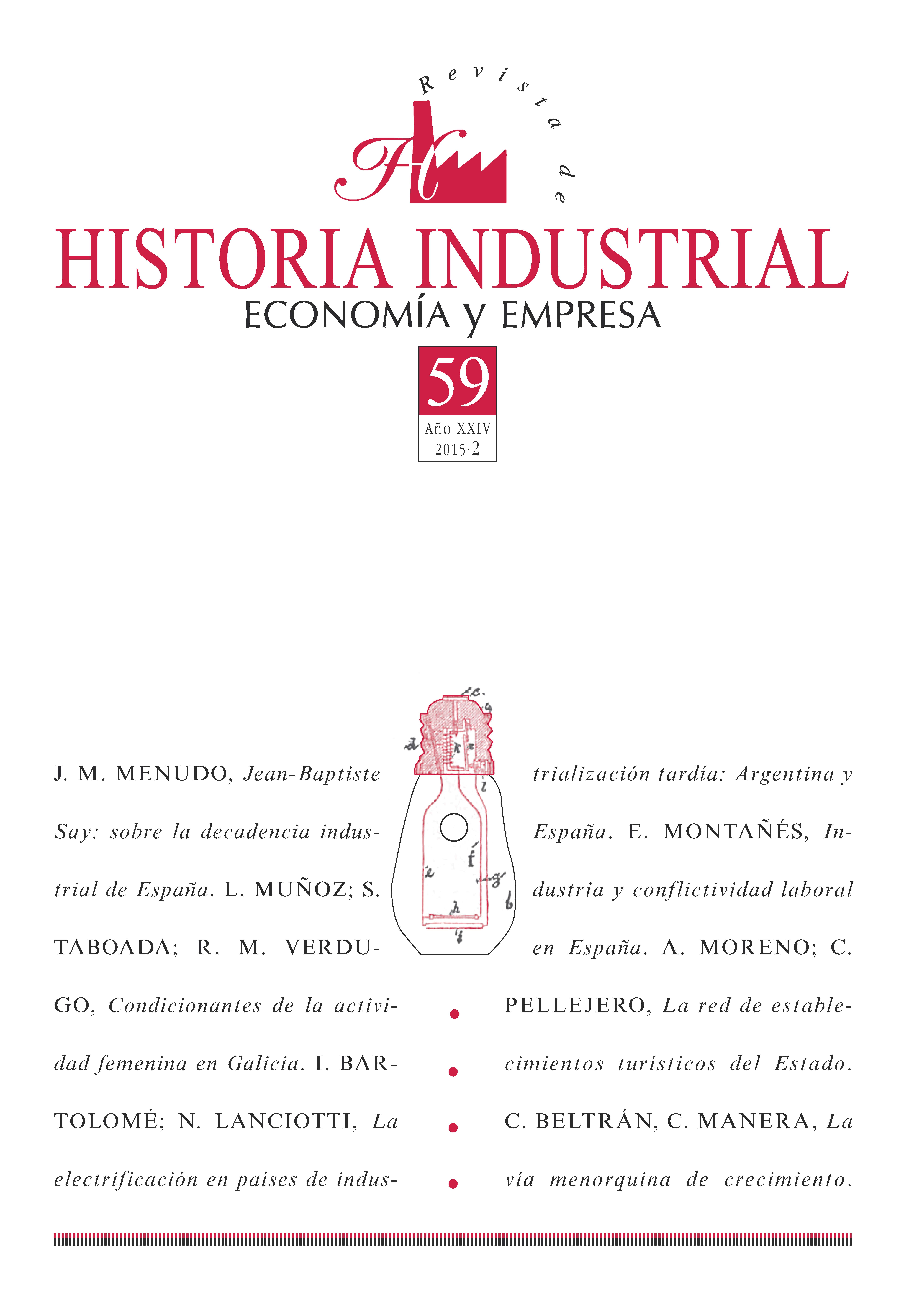Condicionantes de la actividad femenina en la Galicia de mediados del siglo xix
Paraules clau:
Actividad femenina, Empleo, Mercado de trabajo y Economía familiarResum
Este artículo tiene como objetivo calcular la tasa de actividad femenina en Galicia a mediados del siglo xix, analizando los determinantes de oferta y de demanda. La investigación emplea como fuente principal los manuscritos del censo nacional de población de 1857 y padrones de población de 1870, también una fuente fiscal, la «Derrama General de 1857». La metodología consiste en vincular ambas fuentes y, mediante un análisis estadístico, examinar los efectos que sobre la participación laboral tuvieron las siguientes variables: por el lado de la oferta la edad, estado civil, ocupación del marido, renta de la familia, número de hijos e hijos ocupados en el hogar; por el lado de la demanda, el contexto económico local. Los municipios seleccionados representan diferentes modelos económicos de la Galicia urbana y rural: primero, A Coruña era la mayor ciudad comercial de la región, en contraste con Ourense, la menor de las capitales de provincia. Segundo, Padrón era un municipio agrícola pero también tenía industria linera y de curtidos, dos actividades principales en la región. Tercero, Bueu era un pueblo pesquero con industria salazonera. Finalmente, Nigrán era un municipio agrario situado
en la Ría de Vigo.
Descàrregues
Descàrregues
Publicades
Com citar
Número
Secció
Llicència
The author assigns all rights to the publisher. Creative Commons
The author who publishes in this journal agrees to the following terms:
- The author assigns all intellectual property rights exclusively to the publisher for the entire duration of the applicable intellectual property rights.
- The publisher will distribute the texts under the Creative Commons Attribution License, which allows others to share the work, provided that they acknowledge the authorship, its initial publication in this journal, and the conditions of the license.





